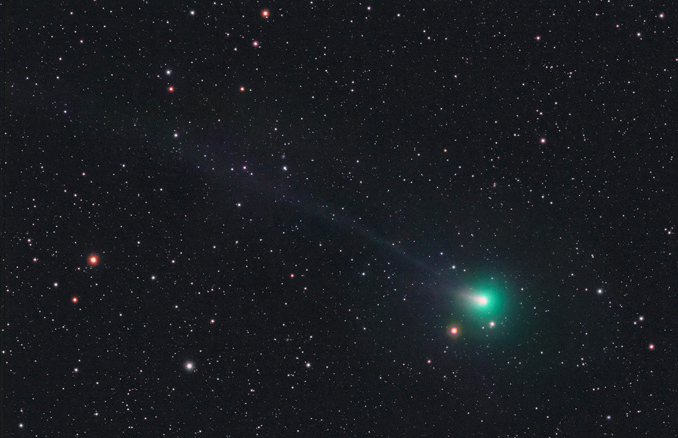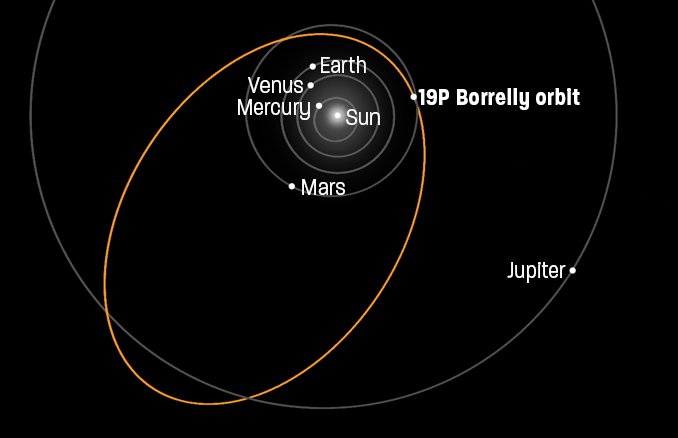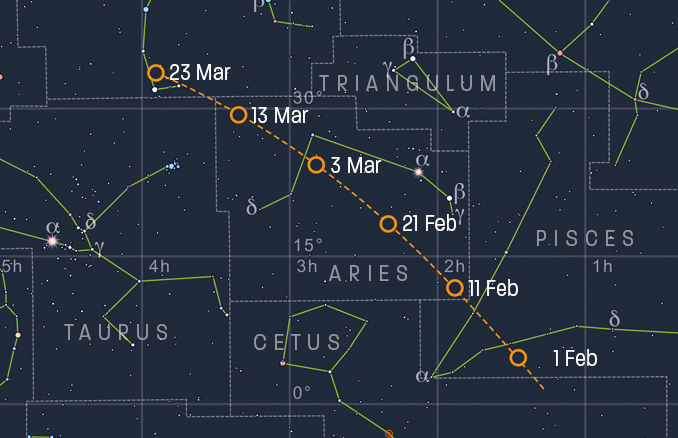
Comet 19P/Borrelly is presently the brightest and best looking comet on show at mid-northern latitudes. It passes through perihelion passage on Tuesday, 1 February, when it lies around 195.4 million kilometres (1.306 AU) from the Sun. The comet came closest to Earth on 11 December 2021, at a distance of 175.7 million kilometres (1.17 AU).

Comet 19P/Borrelly is a periodic comet (denoted by the ‘P’ in its official designation) that takes about 6.9 years to orbit the Sun. In September 2021 the Deep Space 1 spacecraft famously visited the comet, beaming back high-resolution images showing the comet shaped like a chicken leg across its 8 x 4 x 4 kilometre form. Comet 19P/Borrelly is classed a ‘Jupiter-family comet’, described as short-period comets (orbital periods less than 20 years) whose current orbits are influenced by Jupiter’s massive gravitational attraction. Comet 19P/Borrelly was discovered by Alphonse Louis Nicolas Borrelly on 28 December 1904 in Marseille, France.

Comet 19P/Borrelly is shining at around magnitude +9, likely its peak brightness at this return, though some visual estimates have it about half a magnitude brighter. Deep images show Borrelly sports a classic green-hued coma, around 8 to 10 arcminutes in diameter, and a nice tail with faint extensions fanning out as far as half a degree or more. However, recent images of the magnificent tail of Comet 2021 A1 (Leonard) make Borrelly’s look feeble in comparison! Visually through telescopes in the 200–250mm (eight- to ten-inch) class, estimates of the diameter of the coma range from between 3 to 6 arcminutes, with a tail length of around 5 to 8 arcminutes.

Unfortunately, Comet 19P/Borrelly is out of range of 10 x 50 binoculars, though on a fine, moonless evening a small- to medium-aperture telescope should pick it up as it tracks steadily north-eastwards by about a degree per day through the stars of south-west Pisces. On early evenings this week astronomical twilight ends shortly before 7pm GMT in London, at which time Comet 19P/Borrelly lies well up in the south-west, skirting just east of magnitude +4.8 mu Piscium. You’ve got about a two-hour observing window to find and observe it before it becomes too low for comfort prior to setting between about 11pm to 11.15pm. Comet 19P/Borrelly enters Aries on 10 February.
